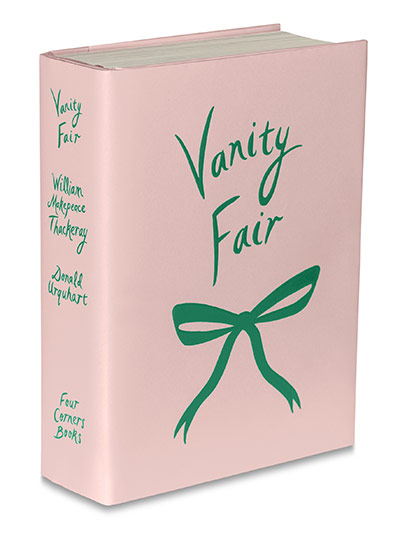
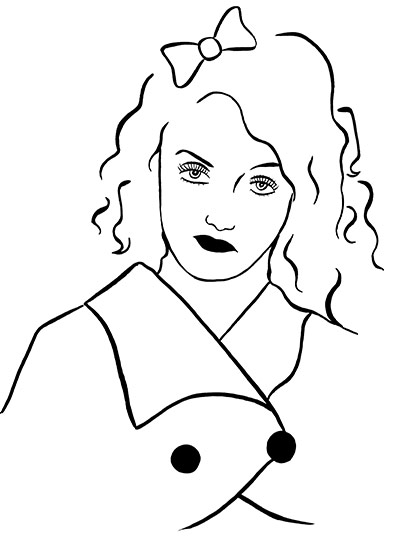
'Establishing Becky as a teenage Jezebel with a few simple lines, this drawing was based on a photo of Bette Davis in a peculiar period coat with two suggestively placed buttons – which I kept in.' Photograph: Donald Urquhart
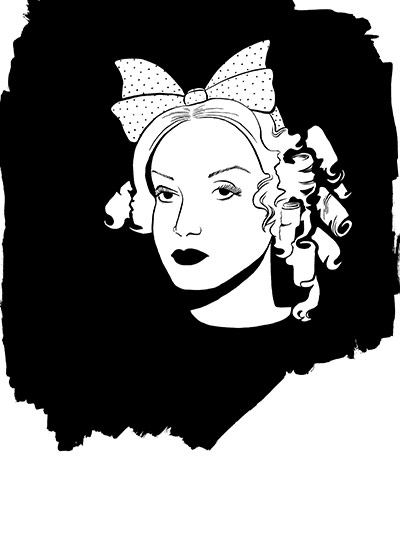
'Here she is dry-eyed and defiant, so the reader easily sees through her crocodile tears. The hair and bow are designed to suggest the early flashback scenes in Bette Davis's Whatever Happened To Baby Jane, where she is a brattish child star' Photograph: Donald Urquhart
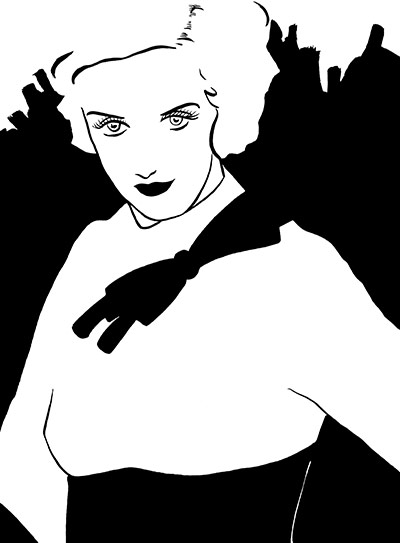
'In contrast to artless, pathetic Amelia (who I have omitted to portray). Originally I intended to draw only the female characters in this "novel without a hero" as a homage to George Cukor's film The Women. Then I thought it would be much more in keeping with Thackeray's intent to have Amelia completely upstaged and eclipsed by Becky Sharp. So Emmy got the boot and Becky dominates the book. I didn't think I had to go overboard on historical research on the fashion details of the Napoleonic wars and that a few bows and ringlets would do. There is a definite 1930s feel to many images, and they often look as if they come from a 1930s film version of Vanity Fair with costumes by American designer Adrian' Photograph: PR
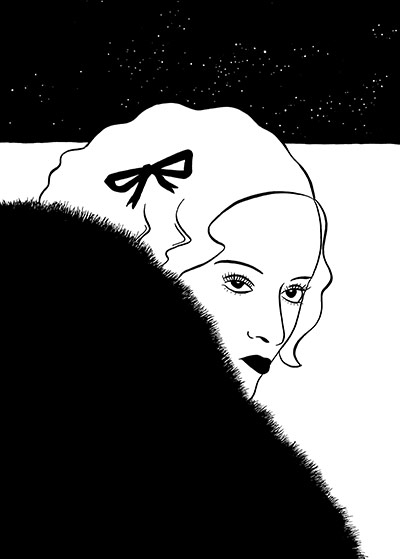
'I couldn't go on throughout the book presenting Becky as a cold-hearted, scheming she-devil, and certainly I had to show that she was attractive. This is a very romantic image, although the fact that she is showing off one of the few facts she managed to memorise at school is hardly poetic or sentimental' Photograph: Donald Urquhart
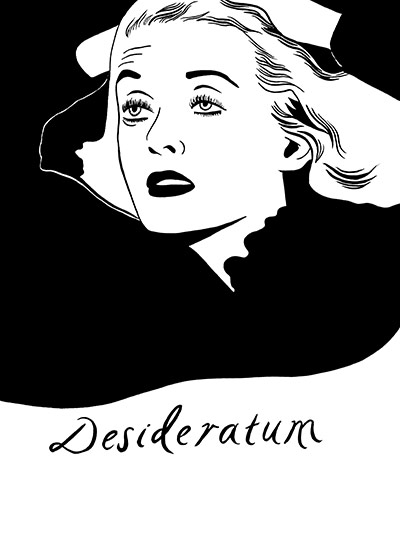
'When I first decided to use Bette Davis as my model for Becky Sharp, it was because her despised rival Miriam Hopkins had starred in the first colour version of the film. She was annoying in it, and Davis would have been much better. As work on the drawings progressed I was amazed at the sheer wealth and breadth of Davis images available, and how her face could be used to express absolutely anything, no matter how complicated, with just a few simple lines' Photograph: Donald Urquhart
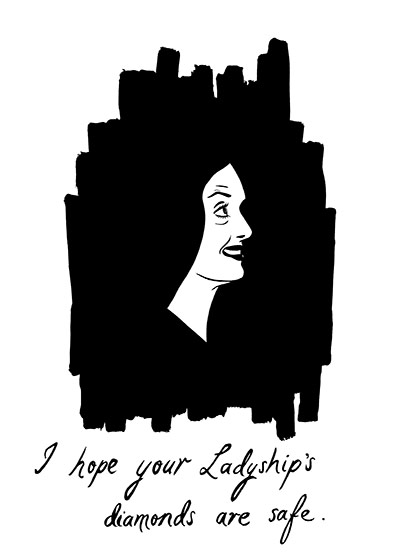
'Of course we know exactly where the diamonds are, and I didn't have to look far for an image of Davis cattily lying through her teeth. She does that in all her movies. It was important to include some comic images' Photograph: Donald Urquhart
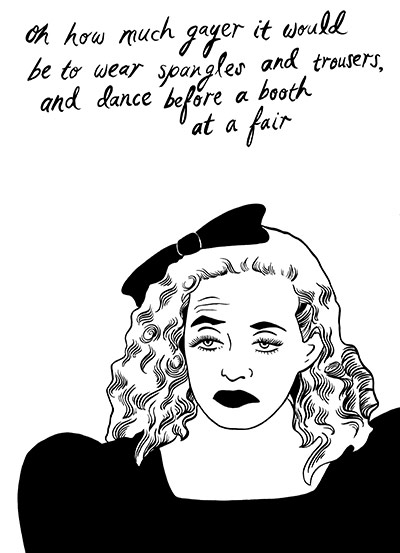
'Drawn from Davis in All About Eve, where her bitchy acid-tongued character finally expresses regret, this is Becky's softer side. Many is the time I have yearned to throw in the drudgeries of life and throw on some drag and hop up and down high-kicking on a disco podium for a living. Indeed at times I have done just that. When I first read Vanity Fair that was the line that hit me like a bolt of lightning' Photograph: Donald Urquhart
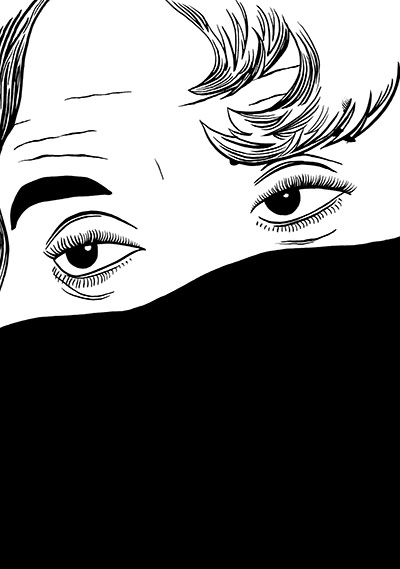
'Here we go, Becky/Bette getting into Baby Jane mode, with a touch of Dick Turpin thrown in. As many people only know of Bette Davis from that film, it was obvious that I would have to gradually age/style her accordingly. Thackeray tells little of how Becky's appearance alters towards the end of the book, so I thought I would take liberties and present her as increasingly hag-like' Photograph: Donald Urquhart
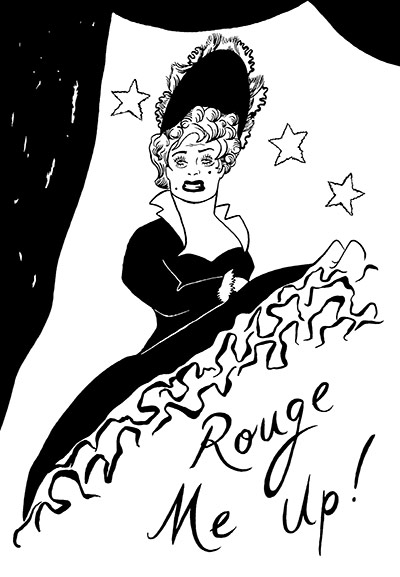
'After a night out clubbing with my friend Sheila Tequila, I read him the line from Thackeray's foreword about the poor old rouged-up tumblers, likening them to the drag queens we had been out with. He instantly started shouting "Rouge me up!" in a Mrs-Bridges-from-Upstairs-Downstairs voice. We then wrote a rhyme called Rouge Me Up and performed it frequently, even basing a theme night on it. I had to get it in the book somewhere, and thought it might be the kind of saucy ditty Rebecca might have in her repertoire' Photograph: Donald Urquhart
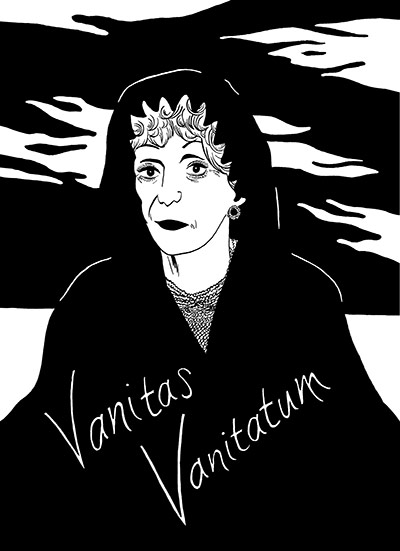
'At the end of the book we are left to speculate on Becky's fate, but somehow know that she will carry on regardless and somehow survive. Davis herself had a long and remarkable career, so I chose to use an image of her after she had survived a stroke and was energetically promoting her memoirs on the talkshow circuit. Vanity of vanities? Bette Davis seldom went in for vanity, and I doubt that Becky Sharp in her later years would have either' • Vanity Fair by William Makepeace Thackeray, images by Donald Urquhart Photograph: Donald Urquhart

